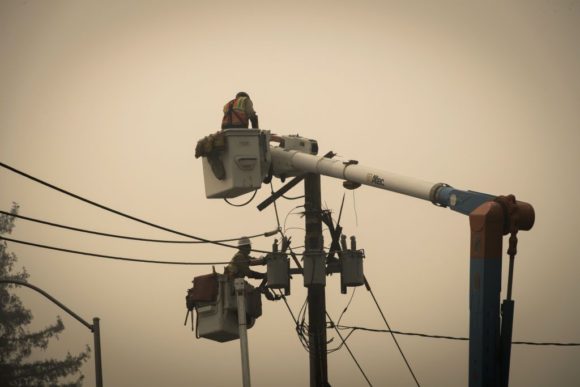PG&E Corp. is finding it very costly to buy fire insurance after wildfires triggered by its power lines sent the company into bankruptcy and left it paying $25.5 billion for claims. It’s hoping customers will foot the bill.
The San Francisco-based company had to cough up about $750 million to secure $1.4 billion of liability coverage for the next 12 months, with only a little more than half of that dedicated to potential fire claims, Chief Financial Officer Jason Wells told investors Thursday during a second-quarter earnings call.

“That is a fancy way for saying nobody would sell them wildfire insurance,” said Andy DeVries, a utility analyst for research firm CreditSights.
PG&E will seek to recover its insurance costs through customer rates, it said in a filing. However, the company noted that it remains unclear whether PG&E “will be able to obtain full recovery of its significantly increased insurance premiums,” or will be able to “obtain wildfire insurance at a reasonable cost in the future, or at all.”
If there is a silver lining, it’s that PG&E can now dip into a wildfire insurance fund to help pay for any future claims because it exited bankruptcy by a state deadline. However, it can only tap into the state funds if damages exceed $1 billion.
PG&E is required by state law to have “reasonable insurance coverage,” according to spokeswoman Lynsey Paulo. Insurance is considered a regular cost of doing business, which the utility is entitled to recover from customers, Paolo said.
PG&E isn’t the only California utility seeing skyrocketing insurance premiums. Earlier this week, Edison International’s Southern California Edison utility said it had pay about $450 million to secure $1 billion in fire insurance through June 2021. Edison’s power lines have been linked to two big Southern California fires in 2017 and 2018.
Was this article valuable?
Here are more articles you may enjoy.

 Johnson Controls Unit to Pay $750M to Settle ‘Forever Chemicals’ Lawsuit
Johnson Controls Unit to Pay $750M to Settle ‘Forever Chemicals’ Lawsuit  CoreLogic Report Probes Evolving Severe Convective Storm Risk Landscape
CoreLogic Report Probes Evolving Severe Convective Storm Risk Landscape  Hawaiian Electric Hits 40-Year Low Ahead of Maui Fire Report
Hawaiian Electric Hits 40-Year Low Ahead of Maui Fire Report  Travelers Survey: Distracted Drivers Making US Roads More Dangerous
Travelers Survey: Distracted Drivers Making US Roads More Dangerous 